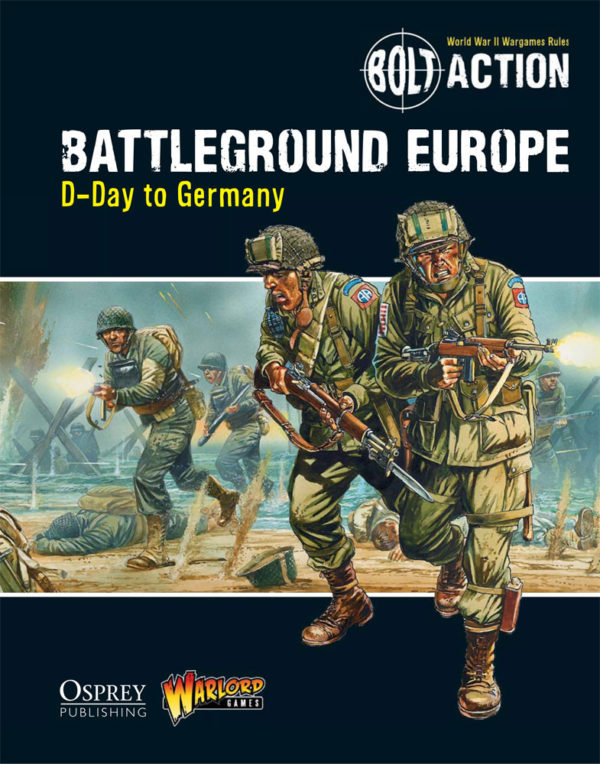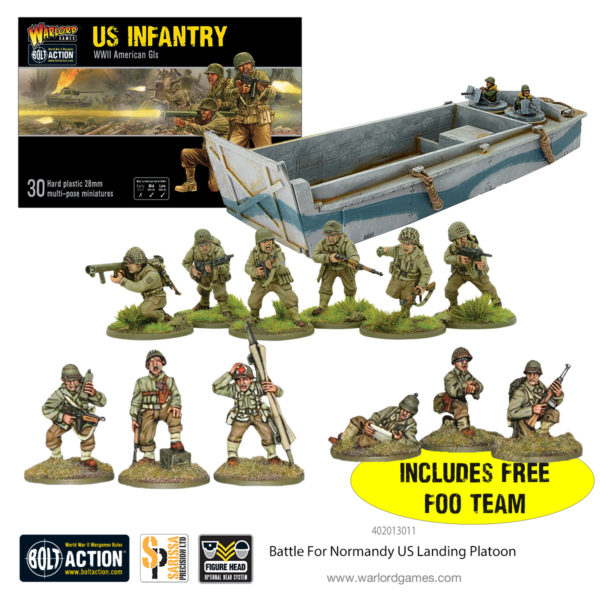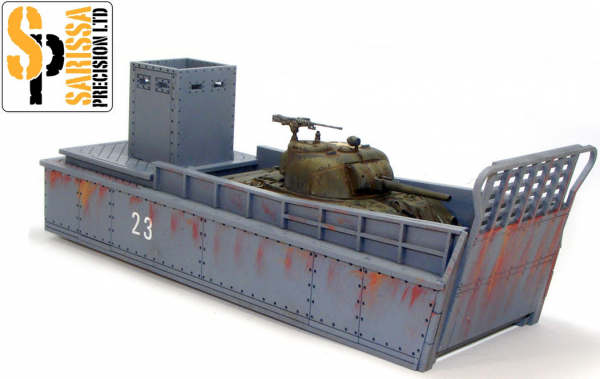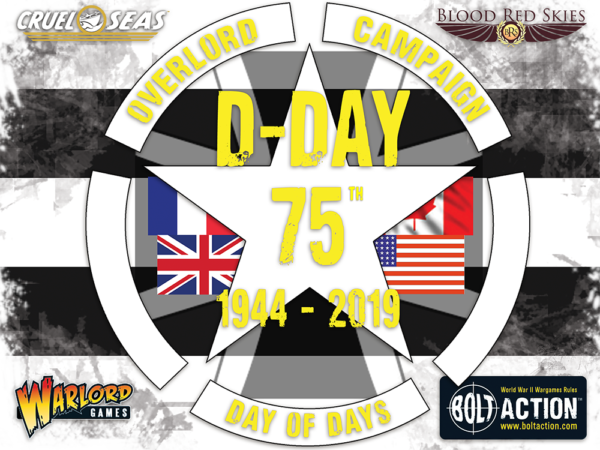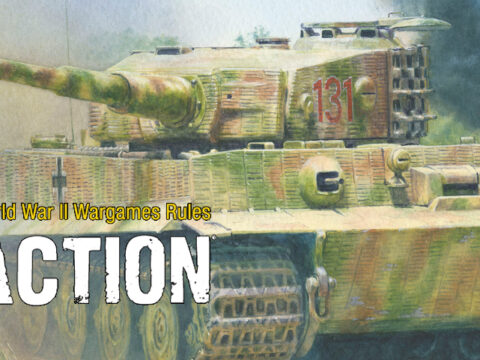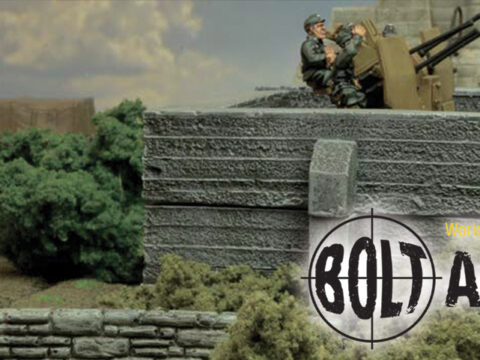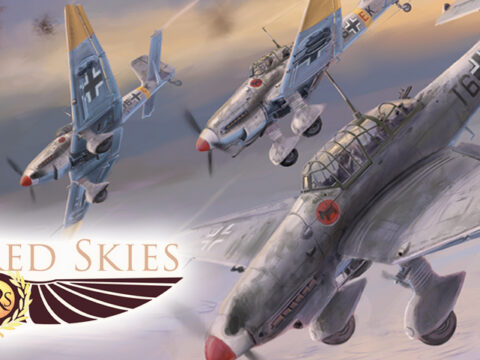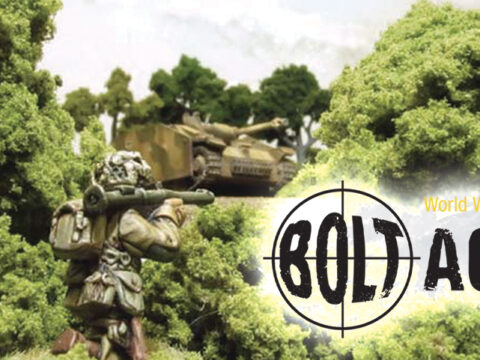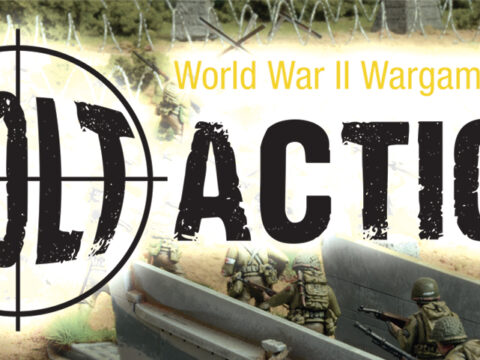With our original Theatre Book, Battleground Europe, leading the way a few years back for D-Day, we thought we’d wring out our resident Italian games master, Alessio Cavatore, for all of his creative juices – in the form of an additional scenario. He’s come-up trumps with a modified take on our Beach Assault rules!
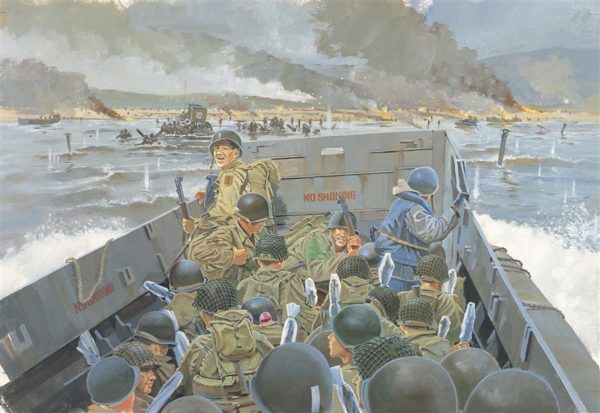
The US units that landed on Omaha beach were from the 29th Infantry Division and the veteran 1st Infantry Division, reinforced by several companies of Rangers. Opposing them were extensive beach defences, manned by the men of the German 352nd Infantry Division – a mix of raw recruits and Eastern front veterans. The meticulously laid-out plan, as it’s often the case, did not survive contact with the elements and with the enemy…
As the landing crafts sluggishly struggled to make their way to their landing objectives through the choppy sea, they came under fire from German defenders, who seemed to have suffered very little effect from the preliminary air and naval bombardments.
On all of the beaches which saw landings on D-Day, the inbound troops were to receive armoured support in the form of amphibious Duplex-Drive tanks which (using an adapted drive system and a skirt erected atop the hull) would ‘swim’ ashore alongside the Landing Craft… however on Omaha, they were beaten by strong currents and the swell. This – partnered with the brutal bombardment which they faced – meant that the Omaha beach landings soon became infamous, earning them the nickname ‘Bloody Omaha.’
Opposing Forces
This scenario is played between an attacking US force and a defending German force.
US platoons should be taken from the 1944 – Normandy selector in the Armies of the United States book but may include no paratroopers nor glider infantry, no artillery units, and no vehicles other than Sherman tanks and DD Sherman tanks.
In addition, the entire force can include a maximum of one tank (to represent the low numbers that actually made it to the beach in the first wave).
The entire force must start the game mounted in landing craft, but all landing craft are free. The rules for these specialized units are found in the Battleground Europe book.
German platoons should be taken from the 1944 – Atlantic Wall resistance nest selector in the Armies of Germany 2nd Edition book.
Also, they get a free minefield section for each landing craft used by the attackers. The rules for minefields are found in the Battleground Europe book.
Set up
From the attacker’s point of view, the first 12″ of the table consists of deep water, the next 12″ is shallow water, then 12″ of beach (rough ground) and the last 12” is normal terrain where the Germans deploy their units and their fortifications.

The German player places half of his forces (rounding up, they can start the game hidden), together with a good amount of obstacles like barbed wire, low walls, sandbag emplacements, tank traps and ditches, and up to three bunkers, within 12″ of his table edge – this is his deployment area. Then he places his mines and a good number of obstacles that are impassable to vehicles anywhere on the beach and/or water areas. Any units not deployed are held back in reserve.
The US player places no units at the start of the game. Instead, he must nominate at least half his force as his first wave. Any units not included in the first wave are held back in reserve.
Special Rules
This scenario uses the Amphibious assaults and Minefields rules presented in the Battleground Europe book.
US troops in reserve cannot obviously use the Outflank rules.
Objective
The US player must try to move as many of his units as he can into the defender’s set-up zone and destroy the defending forces to establish a beachhead. The German player must try to stop him. Note that in this scenario, US units are allowed to deliberately move off the table from the German player’s table edge to reach their objective.
Preparatory Bombardment and Special Artillery Observers
Both the Germans and the US had access to a staggering amount of firepower. The Germans had several guns mounted inland, as well as those on the beach, while the Allies had a massive fleet of naval artillery.
The attackers automatically get a preparatory bombardment.
In addition, each player gets one extra free special artillery observer team. This team consists of an artillery observer and a second man who accompanies him, both armed with pistols. The turn after their artillery barrage is resolved, these special artillery observers can call in another barrage, and continue to do so as long as they are alive.
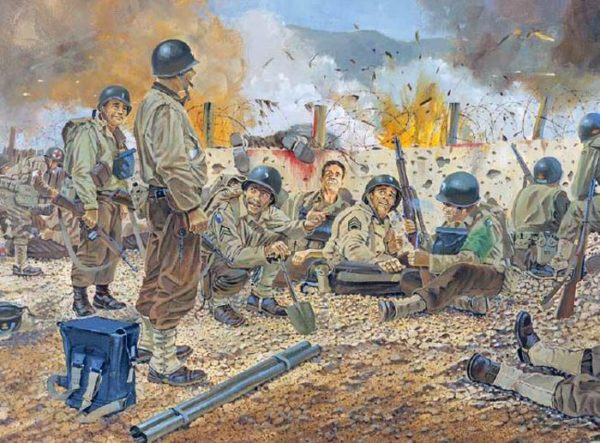
First Turn – the chaotic first wave
The battle begins. During turn 1, the US player must bring his entire first wave onto the table. These units can enter from any point on the US table edge.
Note that, unusually, an order test is required to move these first wave units onto the table, just in the same way as for Reserves – this represents the extreme confusion and delays caused by the rough seas in this sector.
Game Duration
Keep a count of how many turns have elapsed as the game is played. At the end of turn 9, roll a die. On a result of 1, 2 or 3, the game ends, on a roll of 4, 5 or 6 play one further turn.
Victory!
At the end of the game, calculate which side has won by adding up victory points as follows. If one side scores at least 2 more victory points than the other then that side has won a clear victory. Otherwise, the result is deemed too close to call and the result is a draw!
The US player scores 1 victory point for every enemy unit destroyed. He also scores 1 victory point for each of his own units that end the game in the enemy deployment area and 2 victory points for each of his own unit that has moved off the enemy table edge before the end of the game.
The German player scores 1 victory point for every enemy unit destroyed.
Keep posted on all the latest articles and releases with our weekly newsletters. Sign up today:

